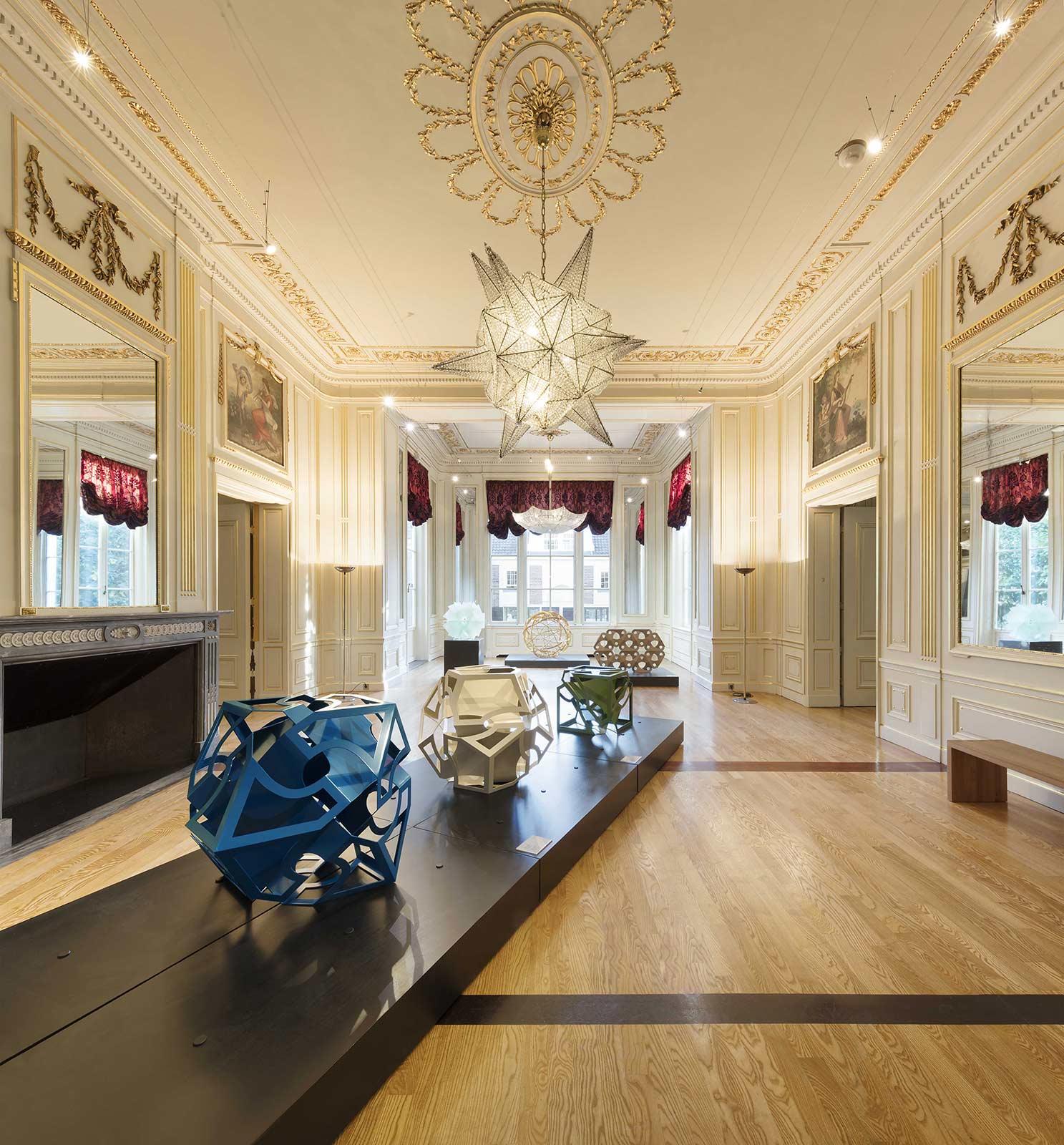
Art about mathematics
Escher in The Palace showed a series of remarkable sculptures by the Dutch mathematician and artist Rinus Roelofs (Hengelo, 1954) in the palace ball room. The main subject of Rinus Roelofs’ art is his fascination about mathematics. To be more precise: his fascination about mathematical structures. Mathematical structures can be found all around us. We can see them everywhere in our daily lives. The use of these structures as visual decoration is so common that we don’t even see this as mathematics. But studying the properties of these structures and especially the relation between the different structures can bring up questions. Questions that can be the start of interesting artistic explorations.
Rinus Roelofs
Artistic explorations of this kind mostly lead to intriguing designs for sculptural objects, which are then made in all kinds of materials, like paper, wood, metal, acrylic, etc.. It all starts with amazement, trying to understand what you see. Solving those questions often leads to new ideas, new designs.
Since Roelofs uses the computer as his main sketchbook these ideas come to reality first as a picture on the screen. From there he can decide what the next step towards physical realisation has to be. A rendered picture, an animation or a 3D physical model made by the use of CNC-milling, laser cutting, or rapid prototyping. Many techniques can be used nowadays, as well as many different materials. But it is all based on his fascination with mathematical structures, a fascination that Rinus Roelofs shares with M.C. Escher.

Photo: Gerrit Schreurs